Low Hang Snatch: Technique, Benefits & Common Mistakes
Author:
Unlock your full potential by engaging with our experts and community! Have questions about your fitness journey or looking for expert advice on weightlifting techniques? Don’t hesitate — leave a comment below and Oleksiy Torokhtiy will provide a personalized answer and insights to help you reach your goals.
Torokhtiy is reader-supported. Some links are affiliate links, and we may earn a commission at no extra cost to you. See our disclosure page for details.
The low hang snatch blends strength, speed, and technique into one dynamic lift. If you take the time to master it, you can expect some great benefits from it. In this article, we’ll go over everything you need to know about it – how to do it, which muscles it targets, what benefits you’re in for, and of course, we’ll throw in some variations and alternatives just for funsies.
Ready to up your lifting game? Let’s go!
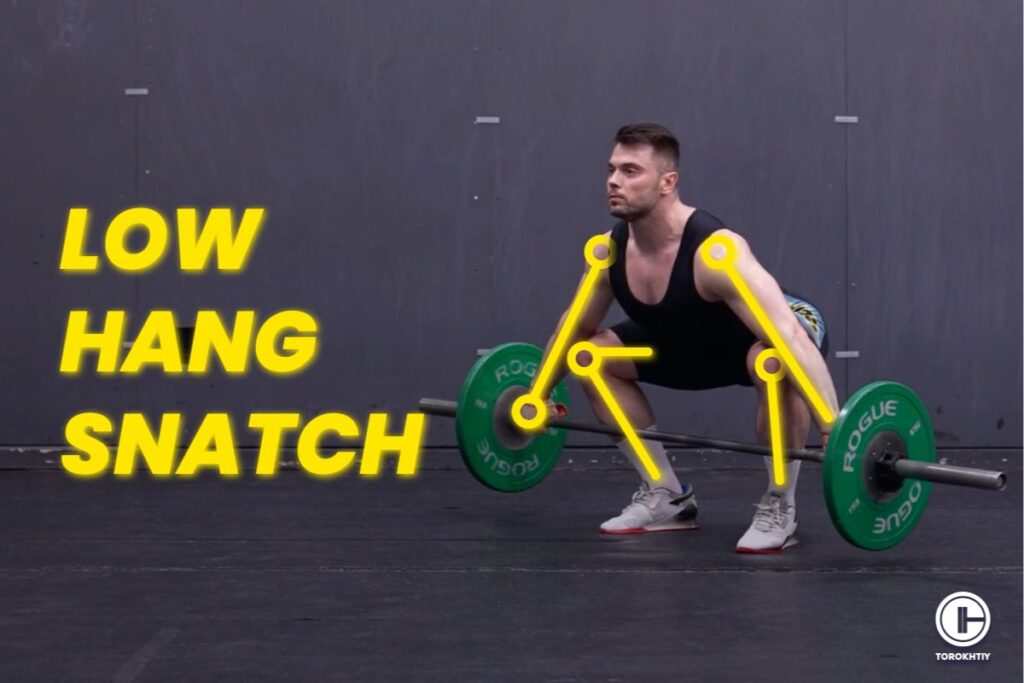
What Is the Low Hang Snatch?
This is an exercise in which you lift a barbell from a position below the knees, just above the floor, to overhead in one fluid motion. Unlike the traditional snatch, the low hang snatch starts with the bar hanging just below the knees, which emphasizes explosive power and speed because you’ll need to generate some serious force from an isometric hold, to propel the bar up.
It’s a staple in Olympic weightlifting and functional fitness routines because of its ability to build strength, speed, and agility.
How to Do the Low Hang Snatch?
1. Starting Position
Start with your feet shoulder-width apart and hold the bar with a wide overhand or hook grip. The true starting position is when it is below the knees so you will need to lift the bar from the floor a few inches and hold it there for a couple of seconds. Arms are relaxed, back is neutral and core is braced.
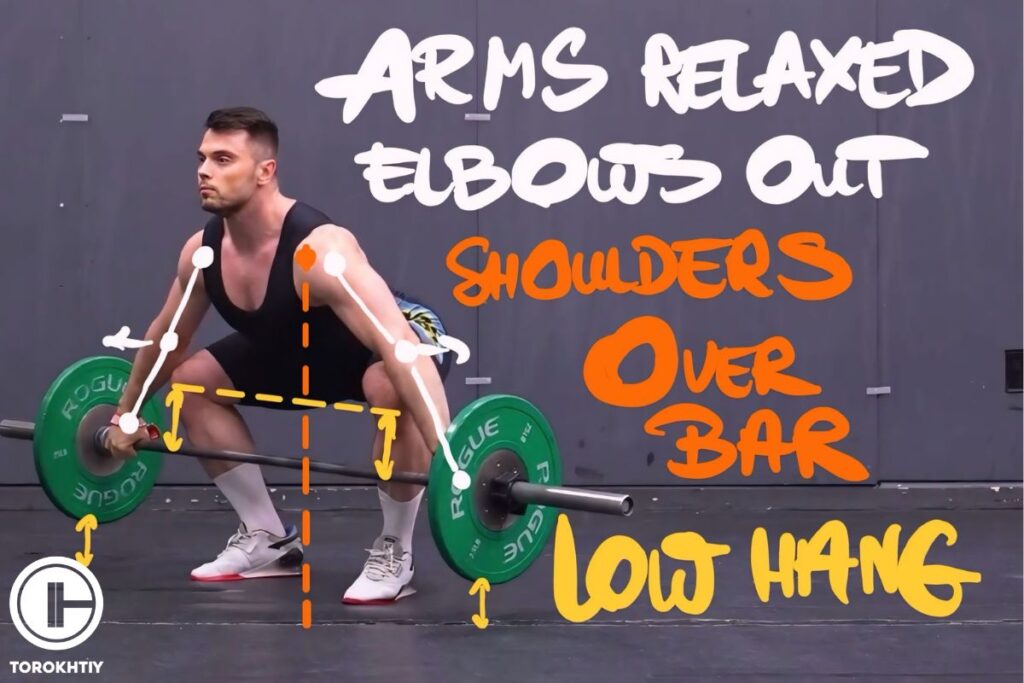
2. First Pull
It’s the low hang version of the snatch so the first pull is a bit shorter. You’re starting with the low hang – the bar just below your knees. So the whole lift starts when you are already holding the barbell for a second.
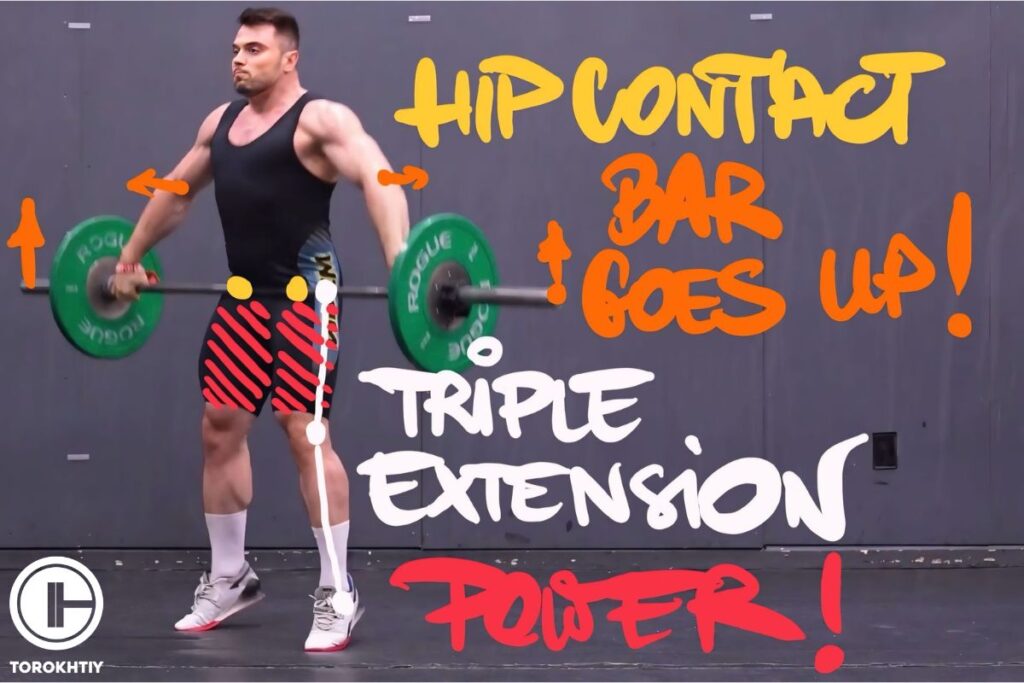
3. Second Pull and Power Position
Extend your hips and knees at the same time to start the lift. This is a powerful, yet a controlled movement and the bar should move vertically in a straight line.
The second pull needs to be aggressive and powerful. This and turnover are main reasons for performing that exercise. Rate of force development and confidence in turnover. Movement is shorter so there is no room for doubts.
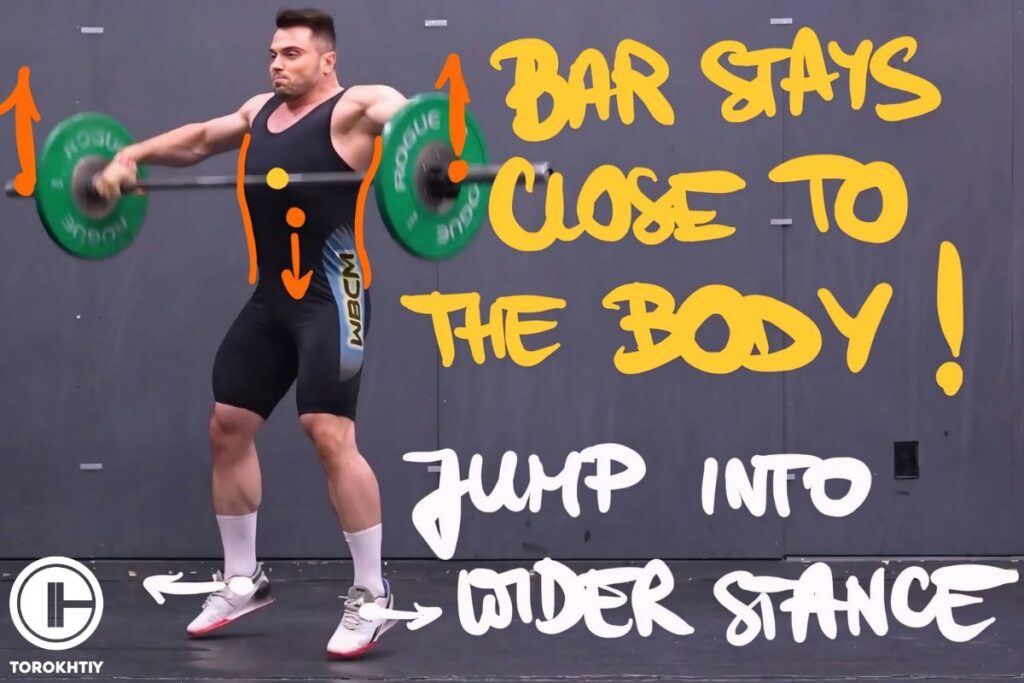
4. Turnover and Catch
Now, this is the fast part – after you extended your hips and knees completely and jumped a tiny bit off the ground. This is where you pull the bar up with your arms, while keeping it close to your body.
As the bar gets to your chest, rotate your wrists to get your elbows under the bar and catch it overhead with arms fully extended. During this, drop into a full squat.
5. Recovery
Extend your hips and knees and stand up. The bar should be overhead with arms fully extended.
Lower the bar back down carefully.
Pat yourself on the back, you just did a low hang snatch!
Save it for easy access!
Bookmark this page now to access the program and instructional videos anytime, anywhere.
Stop wasting time searching during your gym sessions.
How to Program Low Hang Snatch?
| Level | Reps | Sets | Frequency |
|---|---|---|---|
| Beginner | 3-5 | 3-4 | 2 times per week |
| Intermediate | 2-3 | 3-5 | 1-2 times a week |
| Advanced | 1-3 | 1-5 | As many times you need |
Beginner
- Start with 3-4 sets, with 3-5 reps per week
- Do the low hang snatch 2 times per week
- Master the technique first and then start increasing the weight in 5-10 pounds increments
Intermediate
- Do 3-5 sets, with 2-3 reps per set
- Do the low hang snatch 1-2 times per week
- Start using weights that are challenging, but still manageable enough so you don’t mess up your form
Advanced
- Do 1-5 sets, with 1-3 reps per set
- Do the low hang snatch as many times you need, vary the load to work on power, speed and technique
- Use advanced techniques like complexes and wave loading to keep progressing
Follow us!

Free!
Get a 2-week Weightlifting Program as a bonus for the subscription to kickstart your training plan!

Free!
2 Common Low Hang Snatch Mistakes
❌ Rounding the Back
Rounding the back will mess your form up and pull bar path, and correct form is what prevents injuries and makes the exercise effective.
Keep your back flat and core engaged. Chest should be open and you should not look down.
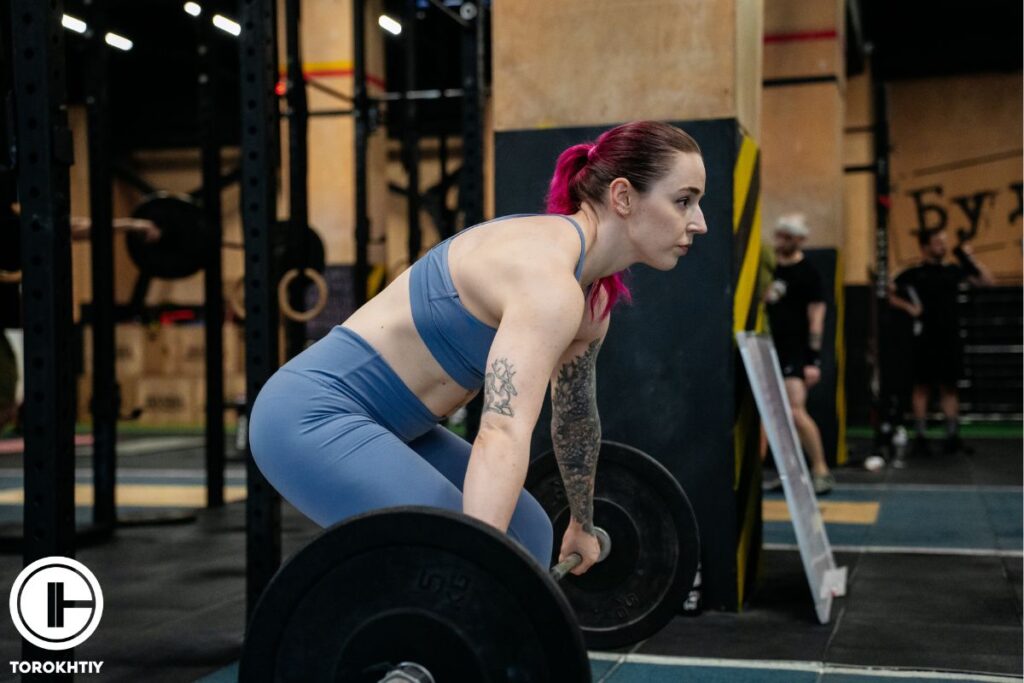
❌ Early Arm Pull
If you pull too early, you’ll hinder the explosive power needed for the lift. Make sure to extend your hips and knees completely before engaging your arms. Although some amazing lifters have arms bended you should first start without that to develop proper form and then have an option. Bending your arms too soon often is causing the wrong bar path and makes the turnover more difficult.
2 Benefits of Low Hang Snatch
✅ Better Explosive Power and confidence
The low hang snatch focuses on the explosive hip and knee extension, so it improves overall power output. But the main benefit will be the rate of force development. Because movement is shorter you need to produce enough force in a shorter time frame.
Combine that with more confidence and your snatch game will improve significantly.
Tips From the Champ
From the low hang position, you’ll really feel the burn in your legs and back – focus on driving through the midfoot and keeping the bar close. This snatch variation is key to mastering your pull-under speed. But remember to plan a good recovery after, cause it will bring you huge fatigue in your back and hips.
Olympic Weightlifting Champion
✅ Core Development
If you want to do the low hang snatch correctly, you’ll need a strong, stable core. This lift engages your core, strengthens it, and promotes better posture.
A strong. stable core is very important for performance, preventing injuries, and you’ll be at less risk of back pain.
Low Hang Snatch Variation
High Hang Snatch
You’ll start with the bar above instead of below the knees and the rest is absolutely the same as the low hang snatch. It will help you improve the catch, as well as shoulder and core stability.
There isn’t really a specific height where you should keep the barber in a high or low hang. It is just below and above the knees and you can experiment with different positions/heights to get different benefits.
2 Low Hang Snatch Alternatives
1. Dumbbell Snatch
This is a unilateral exercise that will improve coordination, balance, and explosive power. You lift a dumbbell from the floor to the overhead position in one fluid motion.
2. Snatch from Blocks
Set the blocks at a height where the barbell rests just below your knees. Grab the bar with a wide, hook grip, and from this position, do a powerful pull, then quickly drop under the bar to catch it overhead in a squat position. Stand up to complete the lift.
It improves explosive power and speed.
Who Should Do the Low Hang Snatch?
1. Olympic Weightlifters
Olympic weightlifters will greatly benefit from the low hang snatch because it will improve their snatch technique, rate of force, explosive power, and even strength. It will allow for work on a very specific element of the whole snatch movement.
2. Athletes
Since the low hang snatch will develop explosive power, speed, and athleticism in general, athletes like football and basketball players will benefit from it because it can improve their performance. Balance and position awareness will improve by doing that exercise.
3. Fitness Enthusiasts
People who want to improve their overall fitness will love the low hang snatch. It targets multiple muscle groups, improves coordination, and builds strength. If you love functional fitness, cross-training etc that exercise will help you with many areas of your fitness and it can add some fun and competition with your friends.
Muscles Worked by the Low Hang Snatch
The low hang snatch hits many major muscle groups. It mainly works your glutes, hamstrings, and lower back, which are responsible for the explosive hip extension. Your quads get a good workout, too, especially during the squat.
The shoulders and upper back help stabilize the bar overhead and the core keeps you stable and balanced. Your forearms and grip are also engaged to hold the bar.
Conclusion
The low hang snatch can amp up your strength, power, and overall fitness. Regardless of your fitness level, this exercise has something to offer. If you learn the technique, you’ll see noticeable improvements in your strength and performance.
Have you tried the low hang snatch? How did you like it? If you haven’t – why? Do you have a favorite variation or alternative to share?
Share your thoughts in the comments and let’s talk some more!
References:
- Darin T. Leetun, Mary Lloyd Ireland, John D. Willson, Bryon T. Ballantyne, and Irene McClay Davis, “Core Stability Measures as Risk Factors for Lower Extremity Injury in Athletes,” Medicine and Science in Sports and Exercise 36, no. 6 (2004): 926-934.
- Health Promotion Board (HPB) “Prevent Injuries with Proper Form During Workouts,” Singapore University Health Center, https://www.nus.edu.sg/uhc/articles/details/prevent-injuries-with-proper-form-during-workouts (accessed July 25th, 2024)
- Mayo Clinic Staff, “Weight training: Do’s and don’ts of proper technique,” Mayo Clinic, https://www.mayoclinic.org/healthy-lifestyle/fitness/in-depth/weight-training/art-20045842 (accessed July 25th, 2024)
- Thomas W. Nesser, Kellie C. Huxel, Jeffrey L. Tincher, and Tomoko Okada, “The Relationship Between Core Stability and Performance in Division I Football Players,” Journal of Strength and Conditioning Research 22, no. 6 (2008): 1750-1754.
- Zachary Smrcina, Sarah Woelfel, Christopher Burcal “A Systematic Review of the Effectiveness of Core Stability Exercises in Patients with Non-Specific Low Back Pain,” International Journal of Sports Physical Therapy 17, no. 5 (2022): 766-774. eCollection 2022.
- Photos by Torokhtiy Media Team.
Why Trust Us?
With over 20 years in Olympic weightlifting, strength training, nutrition coaching, and general fitness our team does its best to provide the audience with ultimate support and meet the needs and requirements of advanced athletes and professional lifters, as well as people who strive to open new opportunities and develop their physical capabilities with us.
By trusting the recommendations of our certified experts in coaching, nutrition, and sports training programming, as well as scientific consultants, and physiotherapists, we provide you with thorough, well-considered, and scientifically proven content. All the information given in the articles concerning workout programming, separate exercises, and athletic performance, in general, is based on verified data.
The product testing process is described in more detail here.
Author: Oleksiy Torokhtiy
Olympic Weightlifting Champion
Best Results: Snatch – 200 kg,
C&J – 240 kg
Oleksiy Torokhtiy is a professional athlete boasting 20 years of experience in Olympic weightlifting. With multiple European and World titles under his belt, he has showcased his prowess in two Olympic Games (Beijing 2008 and London 2012). Upon concluding his illustrious career, Oleksiy dedicated himself to coaching. By 2022, he had conducted over 200 weightlifting seminars worldwide. He is the visionary behind an international sportswear and accessories brand known for its motto, “Warm Body Cold Mind.” Additionally, he is an esteemed author and the creator of a series of training programs and eBooks.




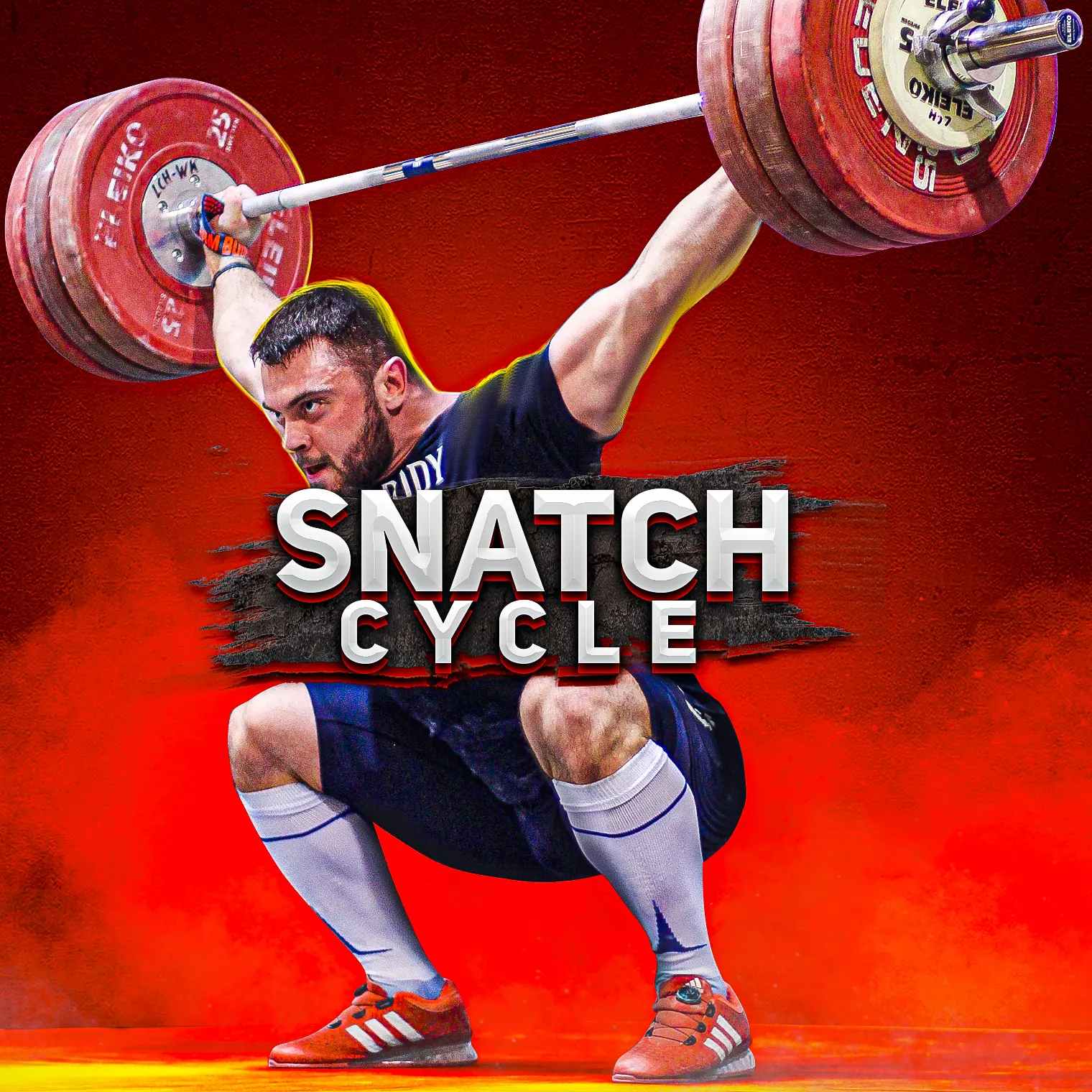
Still have questions after reading our article? Unlock your full potential by engaging with our experts and community! Don’t hesitate — leave a comment below and Oleksiy Torokhtiy will provide a personalized answer and insights to help you reach your goals.